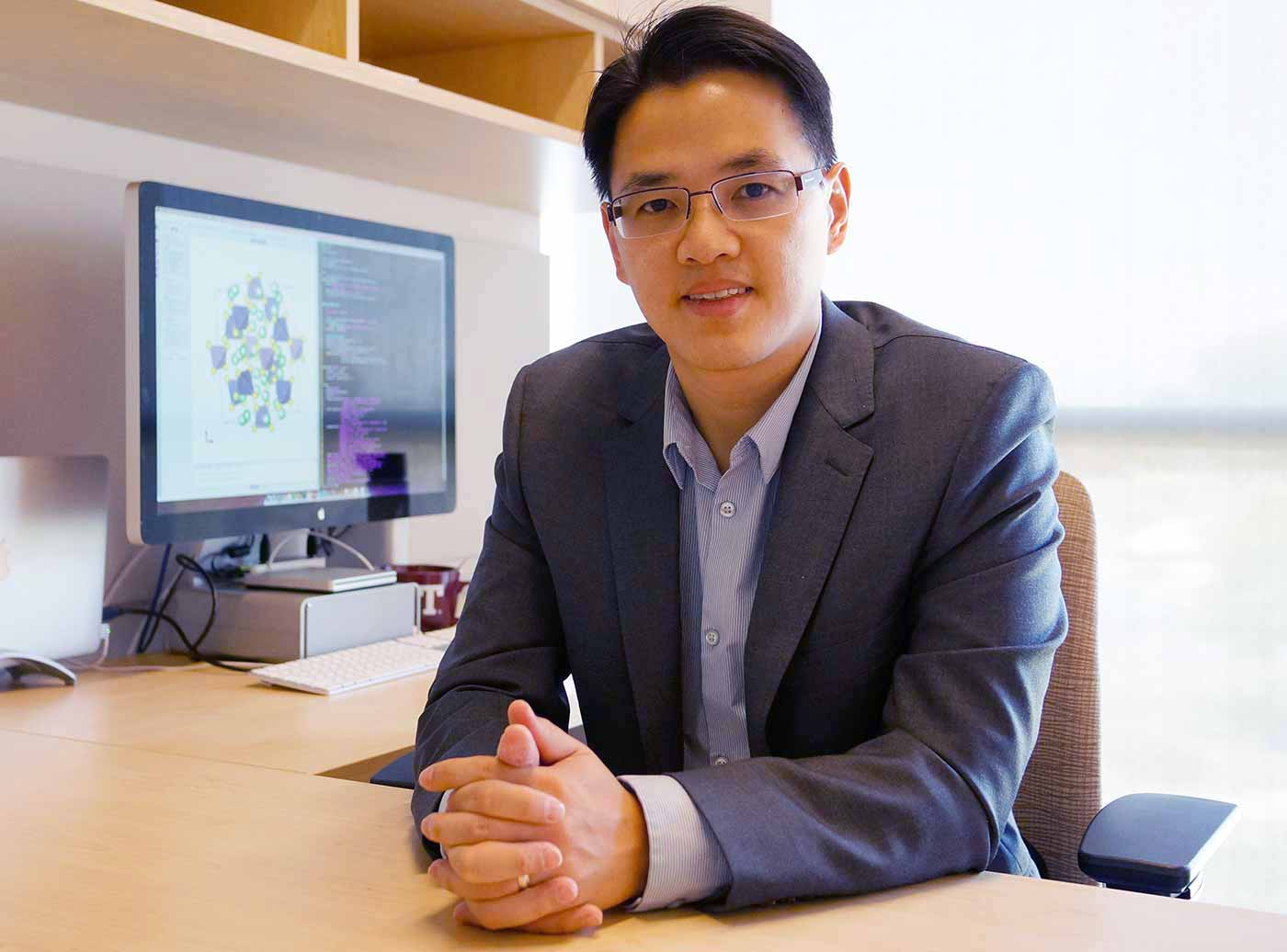By:
- Catherine Hockmuth
Published Date
By:
- Catherine Hockmuth
Share This:
Supercomputing Our Way to Better Materials

Shyue Ping Ong
Impatience drives the materials science research of Shyue Ping Ong. The professor of nanoengineering says the world cannot afford to wait for a slow trial and error approach to discover new materials that could be used to build more energy-efficient technologies. The crisis of global climate change demands a faster and better answer. Ong was recently awarded a prestigious “Early Career” research award from the U.S. Department of Energy to apply his supercomputing approach to the challenge.
Rechargeable batteries are ubiquitous in every aspect of modern life. They power our cell phones, laptops, and portable electronics. In the very near future, they will also power our environmentally friendly electric cars. In light of these increasingly demanding applications, researchers have been trying to develop batteries that can store more energy in a smaller and lighter package. Ong believes materials are the problem holding everyone back in achieving this goal. “The bottleneck in most energy technologies – be it solar cells, lithium ion batteries or thermoelectrics – are related to limitations in the materials used to build devices,” said Ong. “Unfortunately, materials discovery remains very much a painstaking Edisonian process, with a decades-long path to commercialization.”
Instead, Ong’s Materials Virtual Lab at the Jacobs School of Engineering is using high-performance computing to speed up the process, especially for energy applications such as the lithium-ion rechargeable battery, the dominant form of energy storage in most devices today. Lithium-ion batteries function by moving lithium ions reversibly in and out of crystal structures. The easier the ions can move within the crystal, the higher the power the battery can deliver and the better its cycle life. Ong is studying this movement to identify what kinds of crystal structures allow ions to move more easily, with the ultimate goal of reverse engineering an ideal crystal structure for maximum power and life.
His research team benefits from theoretical advances that have made it possible to use computers to predict many properties of materials before they are ever synthesized in the laboratory. Exponential growth in computing power has also meant that researchers can now predict these properties for more materials than ever before. For Ong’s team, it means the ability to run calculations on hundreds or thousands of materials at a time.
“By using computers to study the fundamental relationships between structure, chemistry and materials properties, I hope to find new materials that have better properties than existing ones and do my part in addressing the global climate problem,” said Ong.
Ong is among 35 researchers across the country to receive the DOE Early Career award for 2014. Winners were selected from more than 750 proposals. The program’s goal is to strengthen the nation’s scientific brainpower by supporting a researcher’s early years, when many scientists do their most formative work.
“By supporting our most creative and productive researchers early in their careers, this program is helping to build and sustain America’s scientific workforce,” said Patricia M. Dehmer, acting director of the Energy Department’s Office of Science. “We congratulate this year’s winners on having competed successfully for these highly selective awards, and we look forward to following their accomplishments over the next five years.”
Share This:
You May Also Like
UC San Diego is Strengthening U.S. Semiconductor Innovation and Workforce Development
Technology & EngineeringStay in the Know
Keep up with all the latest from UC San Diego. Subscribe to the newsletter today.



